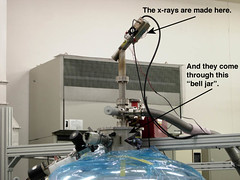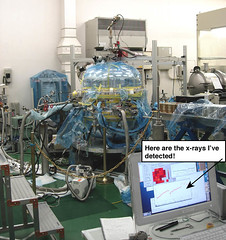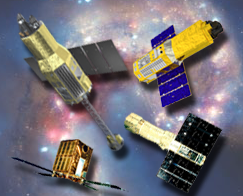X-ray lines
I’ve been looking at these same x-ray lines for a few days now. They just tweak something here and there to see if it affects me. I’m staring at them for nearly all day, with only about an hour break when they need to run the ADR to cycle the temperature. It gets a bit tedious, but I remember a wise man saying, “Tedium and solitude are the inseparable companions of scholarship.” At least I’m not in solitude – I always have good company.
But I’m almost done with this stuff — on to bigger and better things! Or at least different things…





